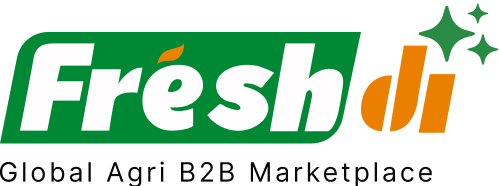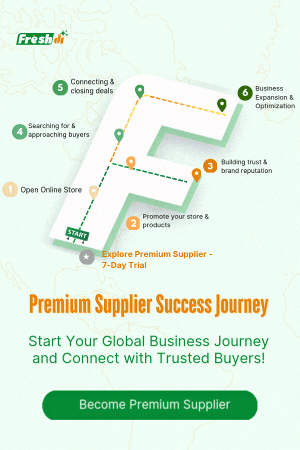Introduction – Current State of Play: The Frozen Fish Sector in Kenya
Kenya’s frozen fish market is at a turning point. In recent months, a combination of government policy shifts, infrastructure upgrades, and global trade dynamics have reshaped the industry landscape. One of the most impactful changes was the government’s decision to impose a 10% excise duty on imported fish, notably slashing Chinese tilapia imports by over 50%. This policy is a game-changer for local producers and buyers alike.
At the same time, Kenya is investing heavily in fish processing and market infrastructure. Projects like the Liwatoni Fish Processing Plant in Mombasa and the Koginga Modern Fish Market in Homa Bay are creating new supply chain opportunities and enhancing local capacity.
But it’s not all smooth sailing. Overfishing, pollution, and a growing supply-demand gap are pressing concerns. With fish exports dropping for the first time in four years, businesses must stay agile and data-informed. If you’re sourcing frozen fish in Kenya, now’s the time to reassess your strategy and tune into real-time market updates.
Platforms like Freshdi play a critical role here—offering supplier verification, RFQ trend insights, and dynamic market data tailored to help buyers make smart, timely decisions.
Deep Dive – Breaking News: Critical Updates & Their Effects
Let’s look at some of the most crucial recent developments in Kenya’s frozen fish industry:
-
Government Tariffs Shake Up Imports
The 10% excise duty on imported fish was a bold move aimed at protecting local industry. The result? A massive 54.4% drop in Chinese tilapia imports. This opens the field for local suppliers to thrive—but also creates pressure to meet rising domestic demand. -
Fish Exports Decline for the First Time in Years
In 2024, Kenya’s fish exports dropped by over 12%, signalling deeper issues like overfishing and illegal practices. Lake Victoria, once a stronghold of fish production, is under stress. Exporters now face tighter margins and more scrutiny. -
Infrastructure Boom
The launch of the Liwatoni Fish Processing Plant in Mombasa and the Koginga Modern Fish Market in Homa Bay is changing the game. These facilities promise better hygiene, faster processing, and more jobs—great news if you’re sourcing high-volume frozen fish. -
Product Innovation Rising
Companies are starting to roll out value-added products like fillets and ready-to-eat frozen fish meals. This is in response to evolving consumer habits and opens up new market segments for suppliers and exporters alike. -
Seaweed Farming as a Complement
While not directly linked to frozen fish, seaweed farming is gaining traction as a sustainable alternative for coastal communities affected by climate change. It’s a sign of how diverse and resourceful Kenya’s blue economy is becoming.
Top 5 Verified Frozen Fish Suppliers in Kenya – Relevant in the Current Climate
These suppliers are vetted through their export performance, certifications, and user feedback from Freshdi. They’re agile, reliable, and well-positioned to navigate the current market dynamics.
1. Sommerfugl Enterprises
Sommerfugl Enterprises is known for its consistent export capabilities and quality control. With a strong presence in both domestic and international markets, they are a go-to for frozen tilapia and Nile perch.
2. Survprint Tech Ltd.
This supplier stands out for its cold chain logistics and packaging innovation. Their ready-for-export frozen fish meets international standards, making them a trusted name for buyers worldwide.
3. Brian Cheruiyot
Brian Cheruiyot offers niche, high-quality fish products, particularly suited for boutique buyers and specialty retailers looking for traceable, locally-sourced frozen fish.
4. Bayfed Enterprise
Bayfed specializes in bulk frozen fish supply, with a reliable processing network. Their adaptability to new government policies has earned them top reviews on Freshdi.
5. Rallega Enterprises
Rallega is making waves with value-added frozen fish offerings. Their fillets and pre-cooked options are gaining traction in retail and foodservice sectors globally.
Dynamic Ranking Note:
Supplier rankings can shift monthly based on RFQ activity, buyer reviews, and export volumes. Platforms like Freshdi offer real-time “Suppliers of the Month/Quarter” to reflect the latest performance and responsiveness, helping buyers make informed choices quickly.
Market Navigation – Strategic Responses to The Prevailing Frozen Fish Landscape in Kenya
Navigating Kenya’s frozen fish market in July 2025 means balancing opportunity with caution. Let’s break it down:
Immediate Opportunities
-
Policy Tailwinds
With the excise duty slashing imports, local suppliers gain a competitive edge. This is your moment to partner with Kenyan producers and secure long-term supply agreements. -
Infrastructure Expansion
Facilities like Liwatoni and Koginga are reducing post-harvest losses and improving product quality. Sourcing from suppliers leveraging these hubs ensures better shelf life and compliance with export standards. -
Product Diversification
The rise of value-added frozen fish products means you can tap into ready-to-cook and convenience segments. This is especially valuable if you’re selling to supermarkets or meal kit services.
Challenges to Watch
-
Supply Shortages
Despite local production efforts, Kenya still faces a 365,000-tonne fish deficit annually. Be prepared for occasional delays or price spikes. -
Environmental Factors
Overfishing and pollution, especially in Lake Victoria, are reducing available stock. Choosing suppliers that use sustainable aquaculture practices can mitigate this risk. -
Global Price Volatility
As the market adjusts to reduced imports and rising internal demand, prices may fluctuate. Locking in contracts now could be a smart hedge.
Smart Sourcing Strategies
-
Invest in Aquaculture Partners
Cage farming in Lake Victoria has driven a 21% boost in marine catch. Partnering with suppliers involved in this method ensures volume stability and better quality. -
Focus on Value-Added Products
Whether it’s vacuum-sealed fillets or flash-frozen cooked tilapia, offering upgraded products helps you punch above your weight in competitive markets. -
Enhance Cold Chain Logistics
Work with suppliers using modern cold storage and transport. This reduces spoilage and supports compliance with export regulations.
Conclusion – Key Takeaways for Businesses in a Dynamic Market
The frozen fish landscape in Kenya is evolving rapidly. New government tariffs are protecting local industry, infrastructure upgrades are enhancing capacity, and value-added products are reshaping consumer demand. But challenges—like declining fish stocks and the persistent demand-supply gap—remain very real.
To survive and thrive, businesses must act fast and smart:
- Prioritize verified, agile suppliers like the ones listed above.
- Adapt your sourcing strategy to include sustainable and value-added products.
- Stay informed through platforms like Freshdi, which offer real-time RFQ data, supplier performance insights, and market alerts.
In a market this dynamic, information is your edge—and Freshdi is your compass.
Buyer’s Checklist: Sourcing Frozen Fish in Kenya – July 2025
✅ Verify supplier certifications and export history
✅ Choose partners involved in aquaculture to ensure supply stability
✅ Evaluate cold chain and storage capabilities
✅ Favor value-added products (fillets, pre-cooked options)
✅ Monitor RFQ trends and pricing shifts via Freshdi
Future Outlook: What’s Next for Frozen Fish in Kenya?
Looking ahead, we expect:
- Further government incentives to boost local fish farming
- Rising demand for convenience-focused frozen products
- Greater emphasis on sustainability and traceability
- Growth of cold chain infrastructure in inland and coastal regions
- Better integration of digital platforms like Freshdi for sourcing
As global seafood demand rises and climate change reshapes ecosystems, Kenya’s frozen fish industry is well-positioned—but only if stakeholders stay informed, sustainable, and adaptable.
How Freshdi Empowers Buyers
Freshdi isn’t just a platform—it’s your sourcing partner. From verified supplier listings to real-time RFQ trends, the platform ensures you’re always a step ahead. Whether you’re sourcing bulk frozen tilapia or niche value-added fish, Freshdi connects you with the right suppliers, backed by data and feedback you can trust.
FAQs
1. What’s causing the recent fluctuations in frozen fish supply in Kenya?
Government policy changes, reduced imports, and declining fish stocks are the main drivers. Infrastructure upgrades are helping, but the supply-demand gap remains significant.
2. How do I verify frozen fish suppliers in Kenya?
You can use platforms like Freshdi to check supplier credentials, buyer reviews, and export readiness.
3. What are value-added frozen fish products, and why are they important?
These include fillets, pre-cooked fish, and vacuum-sealed portions. They cater to convenience-focused consumers and offer better margins for exporters.
4. Is it better to import or source locally in Kenya now?
With the new 10% excise duty on imports, local sourcing is more cost-effective and aligns with government support for domestic production.
5. Are aquaculture-sourced fish more reliable?
Yes. Fish from cage farming and other aquaculture methods offer consistent supply, better traceability, and often improved quality—especially in the face of declining wild fish stocks.


